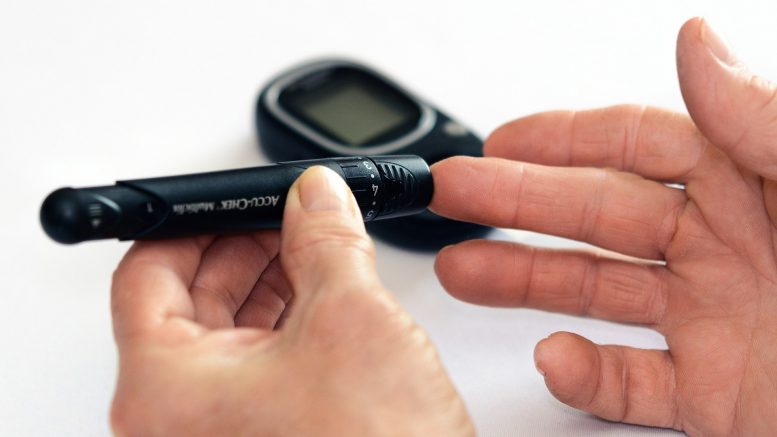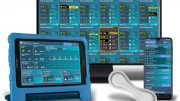Technology to the fore as regulations tighten. Digital lessons to be learned from 20 years of medical device market experience
Since the outbreak of the pandemic, medical device businesses realised they needed technology to meet and work, regardless of location. This tech is no longer a luxury – it is a requirement to ensure they can stay competitive and provide ‘business as usual’ in the event of operational disruption. But how have digital solutions developed to meet ever-changing medical device market issues? Bob Tilling, VP Global Sales at Kallik draws on over two decades of industry experience to discuss the evolution of medical device trends, technology and regulation – and how digital platforms will be increasingly critical to navigate what lies ahead.
The medical device market has traditionally been a very conservative space in terms of adopting new technologies and ways of working. But the outlook towards technologies such as cloud has significantly changed in recent years. In my experience, perhaps ten percent of the industry has reached the stage at which they could be considered fully, end-to-end digitised. Yet for the last five years, an overwhelming majority of RFPs for label and artwork management solutions have insisted on cloud services or a cloud-based deployment.
While this requirement was previously unheard of among risk-averse medical device business leaders, there is now a clear appetite for end-to-end digital transformation of operations. Indeed, regulatory bodies are now using the cloud themselves – prompting many businesses in the industry to follow suit.
A growth market that presents a golden business opportunity – if it can be serviced
At the same time, the medical devices market continues to grow and mature, and is today proving itself to be a highly lucrative market for businesses, growing annually in line with consumer demand – with analyst projections estimating the 2030 market size to be $745bn.
This sharp rise in market value has been driven by major growth in demand for medical devices – and businesses are acutely aware they cannot scale up legacy systems and manual processes to grow in line with demand.
With market growth, comes increasing regulations
Today, there are an estimated two million different medical device products on the market globally, grouped into around 7,000 different ‘families’. These devices are all subject to the whims of constantly evolving and tightening industry regulations in recent years. At the turn of the century, medical device regulations between 2000 and 2010 were relatively minimal, and usually highly targeted in nature.
2010 to 2021 has seen further ‘housekeeping’ regulations, combined with major global changes – think EU MDR, UDI, serialization, IVDR and ISO 13485 standards. This is an unprecedented volume of blanket industry regulation that businesses must contend with, even as they work to handle wide-ranging growing pains of their operations.
The scale of this task is simply becoming unmanageable for many business leaders – especially those in large, multinational businesses that sell numerous product ranges into several markets.
A tipping point for the industry – traceability down to the individual device level
The PIP breast implant scandal was notable in drawing attention to the lack of QA and traceability in the medical device manufacturing and supply chain space. Further similar issues around inferior and non-regulated replacement hip joints also intensified the demand for tighter industry regulation and traceability to ensure patient safety.
Today, this takes the form of Unique Device Identification and MDR/IVDR, regulations that broaden the types of products covered under medical device market regulation and further tighten existing requirements. Yet these compliance demands will inevitably become stricter – regulation is a constant process, and businesses cannot afford to stand and get caught out by the next wave.
For example, every medical device currently requires some level of traceability – but this is per batch, not per product. The next step to further tighten traceability could be at the individual device level, potentially with the addition of unique codes for more granularity.
Underlying technology is evolving – some come and go, but AI holds the key to the future
Kallik has seen a host of iterations of technology and associated industry trends come and go in its 20-year involvement in the industry. Some have proven to be no more than marketing hype, while others have fundamentally changed the way device manufacturers do business.
Industry solutions for managing data, artwork and labelling have certainly evolved over this period to address regulatory and management demands to an extent – from bloated spreadsheets to dedicated databases, PLM and ERP systems, and today’s global asset libraries. But there is still further to go, with emerging technologies such as AI and automation now being applied to enhance specific operations such as artwork generation.
On the compliance side, some businesses have been trying to crack recent regulations such as MDR with manual processes – but they have quickly learned that this is far too expensive and resource-intensive, prone to human error, and unlikely to ensure that they avoid falling behind the regulatory curve.
The benefits are broader than ever
Manufacturers that opt for a modern digital label and artwork management solution over manual or legacy systems are well-placed to tackle future industry and regulatory change, and are already enjoying a range of sustained operational benefits.
Cloud-based solutions also allow teams working across multiple business units and geographies to work collaboratively on critical tasks.
Embracing an end-to-end, centralised solution means medical device manufacturers benefit from a single source of truth – allowing users to tap into approved templates, translations and other assets. This is far more efficient than any manual alternative – it saves a huge amount of time and capacity, cuts reliance on agency outsourcing, and ensures users can easily manage and update far more product assets as the business grows.
These systems also unlock powerful capabilities such as automation and rules-based decision making – helping businesses shift away from preventative product and asset checks to more efficient upstream checking. With regulators providing businesses with digital labelling images to apply to device packaging and artwork, and using cloud-based systems for manufacturers to submit compliance evidence, it is clear the future is digital for the medical device industry.
What lies ahead for the medical device market?
If medical device manufacturers are to succeed in securing a share of this growing market, they will need to prioritise working towards a digitally mature business model with the adoption of cloud, automation and AI – leveraging advanced technologies to redefine working processes for greater operational efficiency and to ensure they stay ahead of the inevitable rise of stricter regulations.





